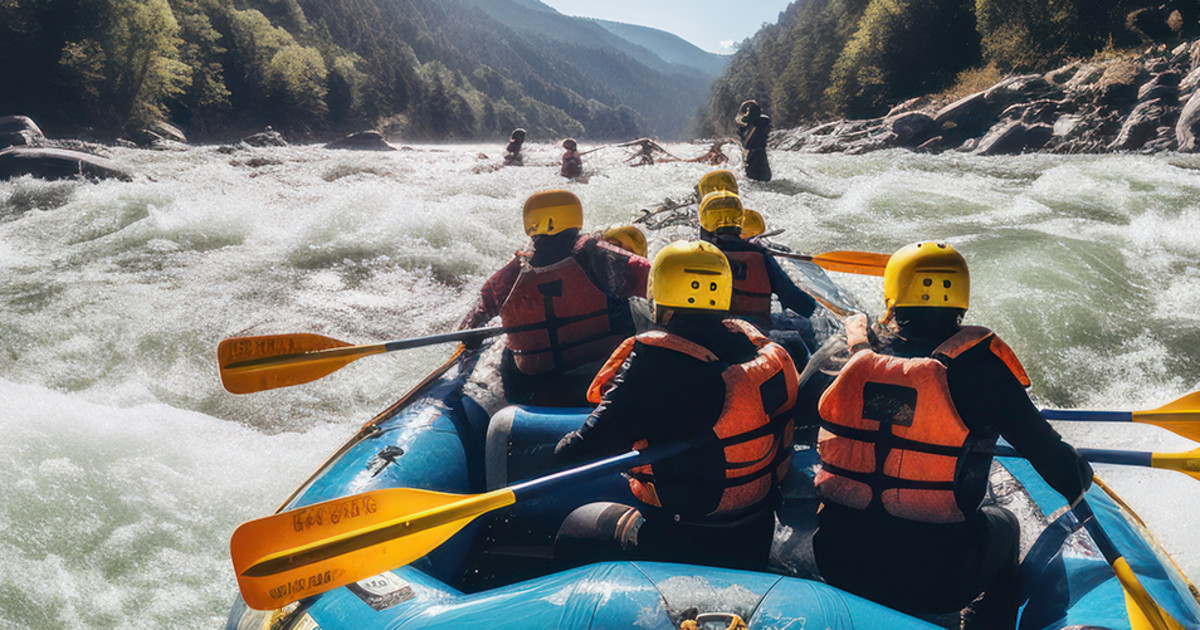The Ultimate Journey: Water Rafting Tips and Techniques
Starting a water rafting journey is a thrilling experience that requires a mix of ability, preparation, and regard for nature's powerful forces (White Water Rafting Colorado). As the thrill of the river drives you onward, browsing with weaves, the art of water rafting reveals itself as an examination of both physical prowess and mental acuity. From selecting the appropriate gear to comprehending the nuances of paddling methods, the trip down the river holds difficulties and accomplishments waiting to be overcome. Yet what genuinely establishes apart a newbie from a skilled rafter lies not just in the mastery of skills, yet in the skill with which one approaches the unforeseeable dancing with the currents.
Essential Equipment for Water Rafting
To ensure security and convenience throughout water rafting adventures, it is imperative to outfit oneself with the crucial equipment customized to this adventurous activity. The initial and most essential tool is a well-fitted individual flotation protection tool (PFD) or life coat. This is non-negotiable for all rafters, as it provides buoyancy in case of unintentional immersion in water. Furthermore, a tough safety helmet is crucial to safeguard against head injuries, specifically in harsh waters or if shaken off the boating.
Furthermore, appropriate shoes is important for keeping good hold and protecting the feet from slippery surface areas or sharp rocks. Neoprene booties or water footwear are suggested for this function. It is likewise a good idea to put on quick-drying garments, such as a wetsuit or breakout guard, to regulate body temperature level and protect against hypothermia in cold water problems.
Finally, a dependable paddle is required for maneuvering with the water successfully. It should be light-weight yet durable to hold up against the roughness of rafting. By purchasing these crucial pieces of equipment, rafters can appreciate their experience on the water with self-confidence and assurance.
Choosing the Right Rafting Path
When preparing a water rafting experience, picking the appropriate rafting route is important for a pleasurable and safe experience. Elements such as the level of trouble, water conditions, and the size of the route should all be considered before starting your trip.
First and foremost, evaluate your group's ability degree and experience. Various rafting courses are classified based upon problem levels varying from Class I (easy) to Course VI (unsafe and extremely challenging) It is very important to select a path that aligns with the abilities of all individuals to make sure everyone's security and satisfaction.
Furthermore, consider the water conditions of the route. Some courses might have tranquil waters appropriate for beginners, while others might have solid currents and difficult rapids that need even more sophisticated skills. Looking into the water levels and potential threats of the course ahead of time can assist you make an informed choice.
Lastly, take into consideration the length of the rafting route. Longer routes may need even more time and endurance, so pick a path that fits within your team's timeframe and physical abilities. By very carefully choosing the appropriate rafting course, you can set yourself up for a unforgettable and thrilling adventure on the water.
Safety And Security Safety Measures on the Water
Considering the relevance of website here picking the ideal rafting path for a enjoyable and risk-free experience, it is crucial to focus on safety precautions on the water to mitigate prospective threats and ensure a successful experience. Prior to beginning on a water rafting trip, ensure all participants wear properly suitable personal flotation gadgets (PFDs) and helmets to secure against accidents. By adhering to these security precautions, you can improve the overall experience and lessen potential hazards while water rafting.
Grasping Paddling Strategies
Establishing proficiency in paddling techniques is essential for browsing with varying water conditions and ensuring a successful water rafting experience. White Water Rafting Colorado. Proper paddling not only aids in steering the plethora successfully but likewise adds to the general sychronisation and synergy needed for a delightful and risk-free trip
Among the basic paddling strategies is the forward stroke. This stroke my review here entails dipping the paddle blade completely into the water and drawing it back along with the raft, offering propulsion and guiding. The backwards stroke, on the other hand, is essential for reducing or turning around down the raft. By mastering the forward and backwards strokes, rafters can efficiently regulate the speed and direction of the boating.

Tips for Handling Rapids Like a Pro
To stand out in navigating difficult river conditions, proficient water rafters apply their mastered paddling strategies with accuracy and finesse when handling rapids like experienced experts. This rhythm helps the raft keep its program and White Water Rafting Colorado security among the stormy waters.

Verdict
In final thought, water rafting needs essential equipment, cautious course option, security preventative measures, grasping paddling strategies, and dealing with rapids with proficiency (White Water Rafting Colorado). By adhering to these methods and tips, adventurers can make sure a enjoyable and successful rafting experience on the water. Keep in mind to constantly prioritize security and be planned for the difficulties that included navigating with rapids. With practice and understanding, anyone can come to be an experienced water rafter.

Considering the importance of selecting the best rafting path for a delightful and safe experience, it is necessary to prioritize safety and security preventative measures on the water to mitigate potential risks and make sure an effective experience. Ultimately, refining paddling methods is essential to a effective and thrilling water rafting experience.
In final thought, water rafting calls for essential gear, mindful route selection, safety and security preventative measures, mastering paddling techniques, and managing rapids with experience.